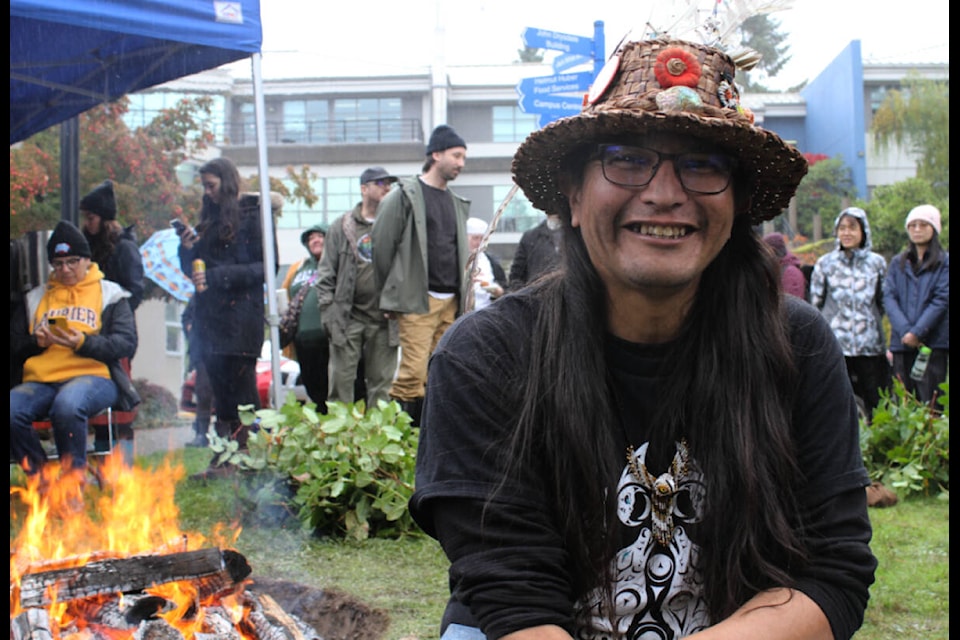Sounds of a crackling campfire, drizzling rain, and student laughter filled Camosun College’s Interurban Campus as people gathered for a Coast Salish pit cook demonstration on Nov. 2.
The annual pit cook hosted by the Eye Sqa’lewen and Camosun College demonstrates the process, educates students on the traditional use of the camas, and is a time when the community is encouraged to share stories.
“It’s a time to get together and to have food,” said knowledge keeper J.B. Williams of the Tsawout First Nation. “It’s an important event to have within our territory just to show that there are still some knowledge keepers that practice this.”
To begin the cooking, a pit was dug into the ground and a fire was lit. Volcanic stones were heated and then submerged in cold water, where steam was created.
“We’re gonna be cooking root vegetables like potatoes, carrots, yams, parsnip, and turnips, and we’ll steam cook them for a couple of hours,” said Williams.
The vegetables prepared by Camosun students were then placed in burlap sacks over the stones and covered by leaves and dirt. Later on in the demonstration, salmon cut by Williams was cooked.
“We are doing some land-based learning today, hands-on applied … to be able to learn about traditional food systems. What is eaten and how it is processed, including the pit cook,” said Nicole Kilburn, an anthropology instructor at Camosun College.
RELATED: Indigenous pit cook demonstration at Camosun College showcases traditional ways of cooking
The cook also showed how the Coast Salish Nations in the region use a fire pit to cook bulbs, the root of a bright blue star-like flower that grows in Garry oak meadows. These bulbs are cooked between layers of other locally harvested plants like sword fern, salal or skunk cabbage.
“The history of the pit cook is actually shared technology,” said Williams. “This way of steaming to cook food can be found all across North America, all across South America, over on the Hawaiian Islands, the Papa New Guinea Islands, New Zealand, and Indonesian Islands. It’s a technology that my mentors and my elders have shared with me. It’s a technique that shows and proves our human willingness to share our knowledge with other people and to help make their lives a little bit easier.”
ALSO READ: New free food market for those in need opens in Victoria
